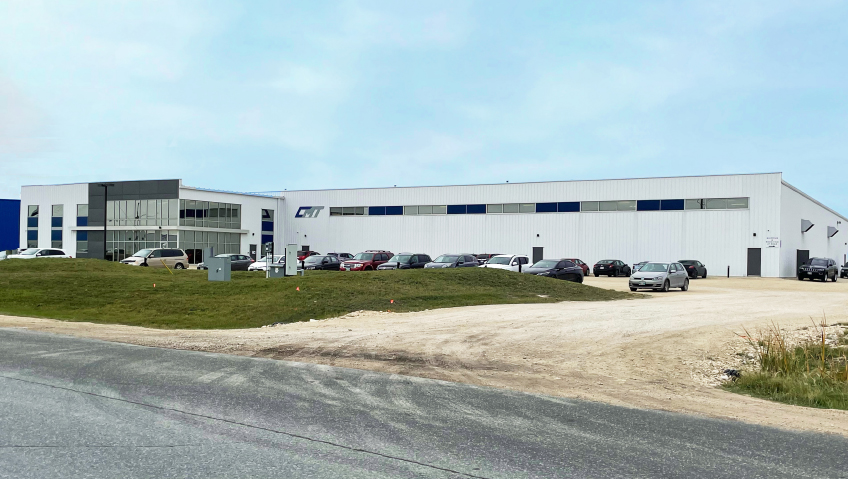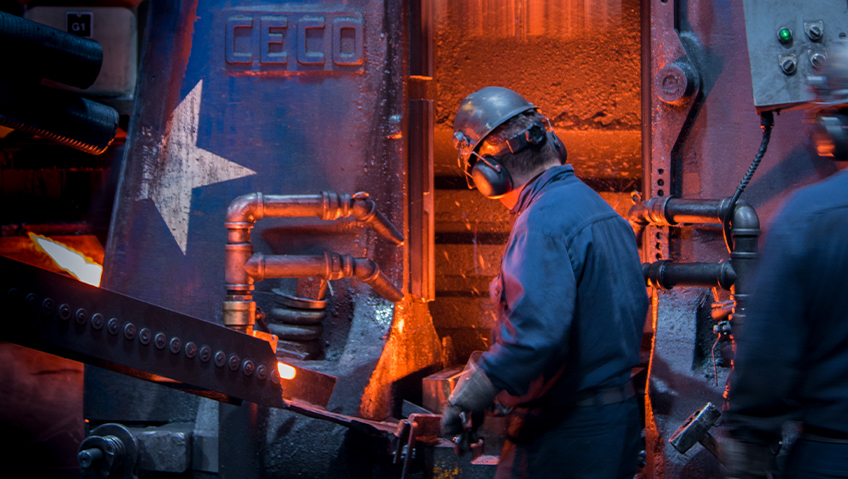Reshoring parts manufacturing may be better for your bottom line than you think, says Sean Cassidy, founder and CEO of Cassidy Manufacturing. “If you take an offshore component, you can truly double or maybe triple the price if you add in all the unseen costs.”
Cassidy, speaking at the Cassidy Manufacturing Technology (CMT) headquarters in Winnipeg, Canada, is adamant about the advantages North American shops can offer. “What’s your total cost? We’re talking shipping, warehousing, currency exchange, quality concerns, engineering changes, and all sorts of other peripheral costs that don’t show up when you’re comparing a unit price to a unit price.”
This is a good message at a time when reshoring is considered the key to economic recovery as we come out of the global pandemic. It also mitigates risk and allows for resilience, responsiveness, and faster time to market.
Cassidy knows the ins and outs of doing good business in North America. His company, Cassidy Manufacturing, is a high-tech CNC machine shop, with an accumulated expertise of value added services that bridges the gap between raw materials and finished parts for the production lines of customers.
CNC, or Computerized Numerical Control, is a lean manufacturing process that uses pre-programmed software to control the movement of production equipment like lathes, drills, and other cutting tools. Cassidy Manufacturing specializes in CNC machining complex parts in substantial volumes, from as few as 100 to as many as 100,000 per contracted order.
Working local
Cassidy is also a proponent of the numerous benefits of working with local instead of offshore suppliers, and his team is committed to demonstrating the reasons for that – delivering on any and all customer asks by working with them through product development to find creative and sustainable manufacturing solutions that fit their needs precisely.
This do-it-all attitude has seen his shop flourish, growing from a single employee in 2007, with two pieces of CNC equipment in a row industrial building, to a 37,000-square-foot operation with nearly 100 employees.
“We do our very best to take on anything our customers need outside of our core competency so that our customers don’t need to ship their parts all over for different steps,” he says.
“We want to deliver exactly what they need to their production floor, whether that’s a special coating, burnishing, grinding, splining, heat treating, assembly, or simply special packaging – everything that they need. We just want to make it easy for them to get their parts or sub assemblies at any stage required to their warehouse, and in whatever batch sizes work best for them to go right into their production lines.”
CMT’s new custom fully-automated powder line can powder coat anything that the company machines. And because the line is on-site, cost-saving and shorter lead times are passed along to the customer.
Calculating the true costs
The challenge in today’s market, Cassidy says, is that too much emphasis is put on the unit cost by some customers and there is much more that needs to be considered. There are numerous unseen costs. “What does a huge delay caused by a missing shipping container really cost in lost sales, production interruption, and subsequent expedition?” Cassidy notes. “What to do with the shipment of 10,000 widgets that don’t meet spec? What’s the real cost when you want to update your product design but you’ve got a warehouse full of stock to use up first and your competitor beats you to market with the latest and greatest? What’s the impact to your cashflow when you need to pre-pay for a year worth of product before it leaves the port?” he says. “Not to mention environmental-impact costs or moral implications of fair work environments,” he says, which are not often considered when people are hunting for the lowest price.
On the green front, for example, his shop’s powder coating process reclaims 98 percent of the powder and uses a biodegradable wash with no effluent stream. His management team prides itself on utilizing technology to the greatest extent possible and is always looking for ways to expand its already significant investments in automation.
Cassidy sweats these details and tracks every nuance of production to make sure his shop stays lean. And he knows how to leverage big data that is driving manufacturing and industries across the board. The company has developed its own custom tailored statistical process control (SPC) software that crunches the real-time data from product and process measurements, improving quality and dramatically reducing output variability and waste.
“We will do calculations on our consumables all the time to see where our ideal feeds and speeds are, where our ideal value is. There is all sorts of data that we extrapolate. It’s been an amazing tool and it’s helped us continue our lean manufacturing efforts.”
SPC is also helping Cassidy Manufacturing match machine operators with work. A matrix classifies machine operator experience on a scale of one to ten and classifies all jobs on a matching scale of complexity to help best allocate human resources.
Employees are encouraged to work on jobs that may be outside their current rating to learn more on the job competencies, but this system also flags any operator who may be working outside of their regular skill range so that supervisors can interact with them, available and ready to deal with queries.
“Really, there’s a whole bunch of data SPC provides that helps us get better and better. It’s not a new concept but we’ve tailored the system to our exact needs for the most efficient use,” Cassidy says.
Becoming the benchmark
The shop’s processes and attention to detail are getting a lot of positive attention, too. “We actually had some of our very large customers come in and interview us. They want to learn more about our system because it works so well for us. We’re really proud that we, as a small to mid-sized company, have large companies coming to us for expertise.”
With industry recognition and a reputation for quality workmanship delivered on time, Cassidy has come a long way from learning the machining trade back in high school. He took an entry-to-tech program and was immediately hooked.
“I could create something and do something meaningful, make things that were lasting, and it was very technically challenging,” he says. The experience sparked his imagination and entrepreneurial fire.
Now he has a process-driven mindset. “There is a whole bunch of cool stuff around production support and programming and streamlining the processes. It’s never-ending and there’s always something to improve on and something else to learn.”
He is quick to point out that success is not a one-person show. It all comes back to the team that makes his life much easier now, after his start-up years of working around the clock himself.
“We’ve managed to assemble this top notch group of people. From our inside sales to our production manager, to our technical manager, to the GM, to our HR manager, to the supervisors, everybody works together extremely well with very minimal input from myself. I’ve always had the attitude that, when we hire you to do a job, I am not going to micromanage you. The secret is to hire people smarter than you and treat them well. These people just work together and it’s awesome. They service our customers the way I would want them serviced.”
Customer service, he says, is one of his top differentiators in a competitive market.
He used to think successful businesses shared in some kind of secret. Now, he has learned, “There is no secret; you simply have to do what you said you were going to do. That’s the secret. If you say you’re going to have 500 parts to them on a specific date and you deliver 500 parts on the specified date and the quality is good and your pricing is fair, that’s really all it takes.”






